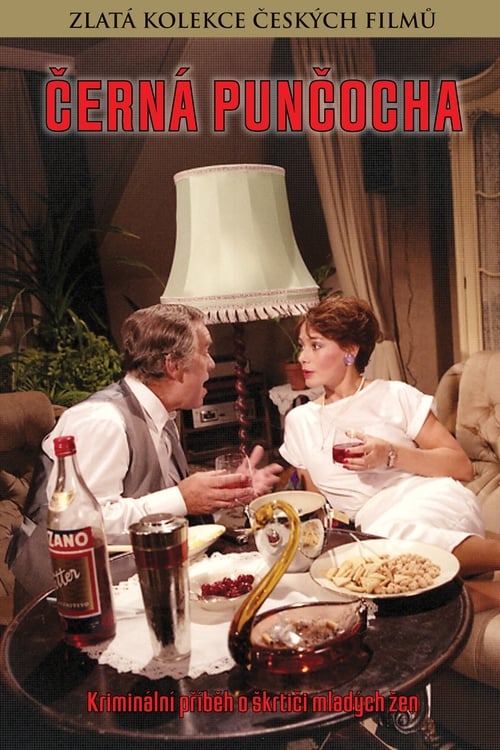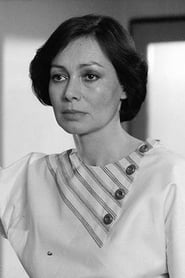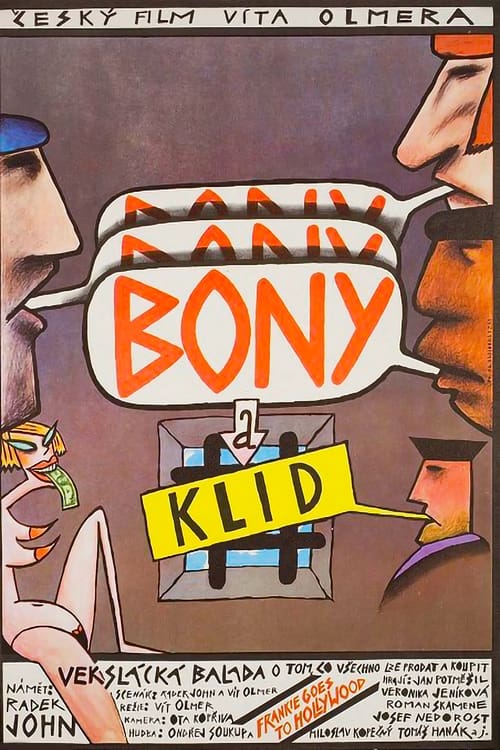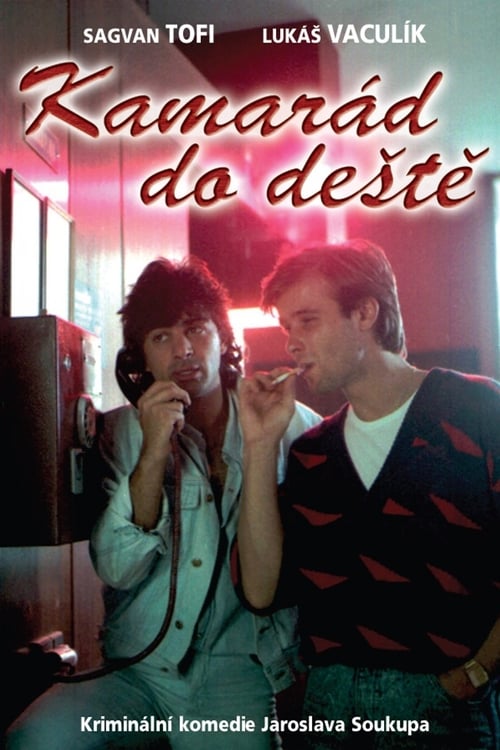
Ask Your Own Question
What is the plot?
The story opens in the quiet, gray streets of 1980s Czechoslovakia, where Milan Karpíšek's character, Miki Opatovský, a fifty-year-old tailor and hairstylist to beautiful models, lives a seemingly mundane life. Miki's days are spent in the backroom of his modest shop, meticulously cutting and stitching fabrics, while his nights harbor a dark, unsettling secret. The film immediately sets a chilling tone as it reveals that Miki is not just a tailor but a calculating predator who uses a black stocking as his weapon of choice to strangle young women.
The first victim appears in a dimly lit alleyway near the city center, found lifeless with the unmistakable mark of strangulation by a black stocking. The camera lingers on the eerie stillness of her body, the stark contrast of the delicate stocking against her pale neck, and the cold, indifferent urban backdrop. This brutal murder shocks the local community and sets the police on high alert. The tension escalates as more young women, all connected by their proximity to the fashion and modeling world, are found dead, each strangled in the same ghastly manner.
Miki's double life unfolds gradually. By day, he is the unassuming tailor, a man who blends into the background, tending to the needs of glamorous clients like Monika, a provocative photographer who often visits his shop. Their interactions are laced with subtle unease; Monika's sharp wit and flirtatious demeanor contrast with Miki's withdrawn, almost haunted presence. In one memorable exchange, Monika teasingly says, "You stitch seams, Miki, but what secrets do you weave in the dark?"--a line that foreshadows the sinister truth lurking beneath his calm exterior.
As the police investigation intensifies, Detective Pavel Novák emerges as the lead investigator. He is methodical and relentless, piecing together clues from the crime scenes, witness testimonies, and the rare but telling forensic evidence. The film meticulously portrays his process, from the sterile crime labs to the gritty interrogation rooms. Pavel's breakthrough comes when he notices a pattern in the victims' last known whereabouts--all had visited or passed near Miki's tailor shop shortly before their deaths.
The narrative tension peaks when Pavel confronts Miki at his shop late one evening. The scene is charged with a claustrophobic atmosphere--the cramped room filled with bolts of fabric, sewing machines, and the faint smell of mothballs. Pavel's voice is steady but firm: "Miki Opatovský, we know about the black stocking. It's time to stop." Miki, initially calm, reveals a flicker of panic, his eyes darting nervously as the weight of his crimes presses down.
In a shocking twist, Miki attempts to strangle Pavel with a black stocking pulled from his own collection, a desperate and violent act that underscores his deranged obsession. The struggle is raw and visceral, with Pavel narrowly escaping death by overpowering Miki and handcuffing him. This confrontation is the film's climactic moment, blending suspense and horror as the predator is finally caught.
The film does not shy away from the grim aftermath. Miki's arrest leads to a courtroom scene where his dark past is unveiled. It is revealed that his murderous impulses stem from a twisted resentment toward the youthful beauty he once served, a psychological unraveling that the film portrays with haunting subtlety. The black stocking, once a symbol of elegance and allure, becomes a chilling emblem of his violence.
The final scenes are somber and reflective. The surviving characters--Monika, Pavel, and the families of the victims--grapple with the trauma left in Miki's wake. The camera pans over the empty tailor shop, now shuttered and silent, as the city moves on but carries the scars of the black stocking murders. The film closes on a cold winter morning, the streets dusted with snow, a stark reminder of the fragility of innocence and the darkness that can hide behind the most ordinary facades.
Every death in the film is caused by Miki Opatovský, who strangles his victims with the black stocking, making his method chillingly consistent and personal. The story's major revelations--Miki's identity as the killer, his psychological motivations, and the pattern linking the victims--are revealed gradually through investigative breakthroughs and tense confrontations, culminating in the violent arrest scene. The resolution is bleak but definitive: justice is served, but at a high human cost, leaving a haunting impression of evil concealed in plain sight.
This narrative, inspired by true events, uses its detailed characterizations, atmospheric settings, and escalating tension to deliver a gripping and complete story of crime, pursuit, and the dark undercurrents of human nature.
More Movies Like This
Browse All Movies →What is the ending?
In the ending of the movie Černá punčocha, the protagonist, a young woman named Eva, confronts the reality of her life choices and the consequences of her relationships. The film culminates in a poignant moment where she must decide between her past and the uncertain future that lies ahead. Ultimately, she chooses to embrace her independence, leaving behind the toxic influences that have shaped her life.
As the final scenes unfold, Eva stands at a crossroads, both literally and metaphorically. She reflects on her journey, the people she has encountered, and the struggles she has faced. The film closes with her walking away from her past, symbolizing a new beginning and the hope for a better future.
Now, let's delve into the ending in a more detailed, chronological narrative.
The climax of Černá punčocha occurs in a dimly lit room, where Eva finds herself surrounded by the remnants of her past. The atmosphere is thick with tension as she faces her former lover, who represents the chaos and emotional turmoil she has endured. Their conversation is fraught with unresolved feelings, and Eva's internal conflict is palpable. She grapples with the memories of their passionate yet destructive relationship, her heart heavy with the weight of nostalgia and regret.
As the dialogue unfolds, Eva's voice trembles with emotion. She recalls the moments of joy intertwined with pain, the laughter that was often overshadowed by tears. Her lover, sensing her vulnerability, attempts to draw her back into the familiar cycle of dependency. However, Eva's resolve begins to solidify. She realizes that returning to this life would mean sacrificing her own identity and dreams.
In a pivotal moment, Eva stands up, her posture shifting from one of uncertainty to one of determination. She declares her intention to break free from the chains of her past. The room feels charged with her newfound strength, and the shadows of doubt that once loomed over her begin to dissipate. Her lover, taken aback by her transformation, struggles to comprehend her decision. The emotional intensity of the scene crescendos as Eva walks towards the door, symbolizing her choice to step into the unknown.
Outside, the world is bathed in the soft glow of twilight. Eva pauses for a moment, taking a deep breath as she absorbs the beauty around her. The vibrant colors of the sunset reflect her inner turmoil and hope. She knows that the path ahead will not be easy, but the weight of her past no longer holds her captive. With each step she takes away from the door, she sheds the remnants of her former life.
As she walks down the street, the camera captures her silhouette against the fading light, a powerful image of resilience and independence. The film concludes with Eva disappearing into the horizon, leaving behind the shadows of her past. The final shot lingers on the empty room, a stark reminder of what she has left behind, but also a testament to her courage in choosing a new direction.
In the end, Eva's journey is one of self-discovery and empowerment. She emerges from the darkness of her past, ready to embrace the possibilities that lie ahead. The fate of her former lover remains uncertain, trapped in the cycle of their tumultuous relationship, while Eva steps into a future filled with hope and potential. The film closes on this note of liberation, emphasizing the importance of personal growth and the courage to forge one's own path.
Is there a post-credit scene?
The movie "Černá punčocha," produced in 1987, does not feature a post-credit scene. The film concludes its narrative without any additional scenes or content after the credits roll. The story wraps up in a way that leaves the audience with a sense of closure regarding the characters and their journeys, focusing on the themes and emotional arcs established throughout the film.
How do the supporting characters influence the main character's journey?
Supporting characters serve as catalysts for the protagonist's growth. Their interactions reveal different facets of her personality and challenge her perceptions of love and fidelity, ultimately pushing her towards self-discovery.
What role does the setting play in the development of the characters?
The setting, primarily in urban environments, reflects the characters' inner struggles and societal pressures. The contrasting locations highlight their emotional states, with darker, more claustrophobic spaces mirroring feelings of entrapment and confusion.
What internal conflicts does the protagonist face throughout the film?
The protagonist grapples with feelings of inadequacy, fear of abandonment, and the desire for independence. These internal conflicts manifest in her relationships and decisions, driving the narrative forward and adding depth to her character.
What is the significance of the black stocking in the film?
The black stocking serves as a central symbol in the film, representing both desire and the complexities of relationships. It is a physical object that connects the characters, particularly the protagonist, to their innermost feelings and conflicts.
How does the protagonist's relationship with her lover evolve throughout the film?
The protagonist's relationship with her lover is marked by tension and emotional turmoil. Initially, there is passion and excitement, but as the story unfolds, insecurities and misunderstandings arise, leading to a deeper exploration of their emotional states and motivations.
Is this family friendly?
"Černá punčocha," produced in 1987, is a film that delves into themes of love, betrayal, and the complexities of human relationships. While it has a narrative that can be engaging, there are several aspects that may be considered objectionable or upsetting for children or sensitive viewers:
-
Mature Themes: The film explores adult relationships and infidelity, which may not be suitable for younger audiences.
-
Emotional Turmoil: Characters experience significant emotional distress, including heartbreak and betrayal, which could be intense for sensitive viewers.
-
Conflict and Tension: There are scenes of interpersonal conflict that may evoke feelings of discomfort or anxiety.
-
Visual Imagery: Some scenes may contain visual elements that are dark or unsettling, reflecting the film's exploration of complex emotional states.
-
Subtle References: There may be subtle references to adult situations that could be confusing or inappropriate for children.
Overall, while "Černá punčocha" has artistic merit, its themes and emotional depth may not be suitable for a family-friendly viewing experience.



































